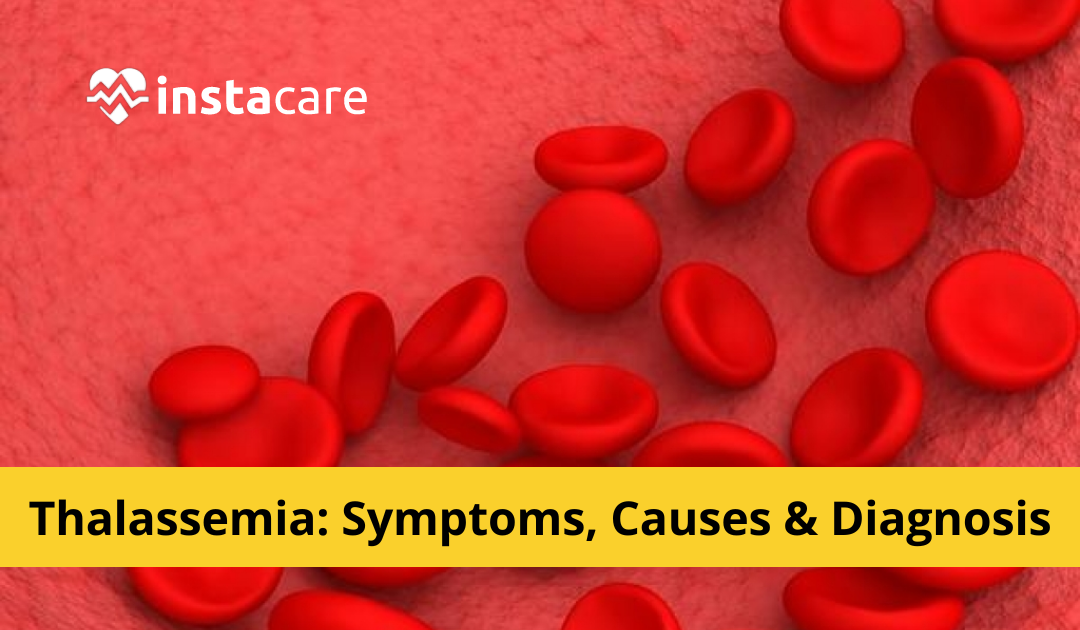Haemoglobin, the protein also in red blood cells that carries oxygen throughout the body, is produced under thalassemia, a hereditary illness. The genes that regulate the manufacturing of haemoglobin have mutations, which is what causes it. Mild anaemia to serious problems like organ damage and heart failure are just a few of the symptoms that can be brought on by thalassemia.
Symptoms
Thalassemia symptoms can differ depending on the kind and
severity of the disease. Some people may not have symptoms, while others may
have mild to severe symptoms. The following are also some of the most typical
thalassemia symptoms:
- Anaemia: anaemia is a disorder in which the body lacks enough also
red blood cells to transport oxygen to the tissues. Thalassemia can induce
anaemia. Shortness of breath, exhaustion, and weakness may result from this.
- Jaundice: thalassemia can destroy red blood cells, leading
to an accumulation of bilirubin also in the blood. This can cause yellowing of
the skin and eyes, a condition is known as jaundice.
- Enlarged spleen: thalassemia can cause the spleen to enlarge
as it tries to filter out abnormal red blood cells.
- Delayed growth: in children with thalassemia, the disease
can cause delayed growth and development
- Bone deformities: in severe cases of thalassemia, the
disease can cause bone deformities such as an enlarged forehead, prominent
cheekbones, and an overgrowth of the upper jaw.
Causes
The genes that regulate the manufacturing of haemoglobin
have mutations, which result in thalassemia. Four protein chains, two alpha
chains also and two beta chains make up haemoglobin. When one or more of these
genes are altered, a deficiency or anomaly in the production of one or more of
the protein chains results, which causes thalassemia. Thalassemia mostly comes
in two forms:
- Alpha thalassemia
Alpha thalassemia occurs when a mutation in one or more of
the genes produces the alpha chains of haemoglobin. There are four alpha genes,
and depending on the number of genes that are affected, alpha thalassemia also
can be classified as a silent carrier, alpha thalassemia trait, haemoglobin h
disease, or hydrops fetalis.
- Beta thalassemia
Beta thalassemia occurs when a mutation in one or both genes produces the beta chains of haemoglobin. Beta thalassemia can be classified as beta thalassemia minor or beta thalassemia major, depending on the severity of the disease.
View More: What is leukemia - Symptoms Signs Causes Types And Treatment
Diagnosis
Thalassemia is usually diagnosed through medical history, physical examination, and blood tests. Blood tests can reveal the number and size of red blood cells, the amount of haemoglobin, and the types of haemoglobin present in the blood. A diagnosis of thalassemia may also involve genetic testing to identify mutations in the genes that control the production of haemoglobin.
Treatment
The kind and severity of the disease determine the
thalassemia treatment. Thalassemia may not need treatment in mild cases, but
more severe cases may need frequent blood transfusions, medication, or a bone
marrow transplant. Here are a few typical thalassemia treatments:
- Blood transfusions
People with severe thalassemia may require regular blood
transfusions to replace the deficient or abnormal red blood cells. Blood
transfusions can help alleviate symptoms such as fatigue, weakness, and
shortness of breath and prevent complications such as organ damage and heart
failure. However, frequent blood transfusions can also lead to iron overload,
damaging organs such as the liver and heart. To prevent iron overload, people
who receive regular blood transfusions may also need chelation therapy, which
involves taking medication to remove excess iron from the body.
- Medications
Medications such as folic acid, iron, and antibiotics may
also be prescribed to people with thalassemia to help manage symptoms and
prevent complications.
- Bone marrow transplantation
Sometimes, a bone marrow transplant may be recommended for
people with severe thalassemia. A bone marrow transplant involves replacing
defective bone marrow cells with healthy cells from a donor. However, bone
marrow transplantation is a complex and risky procedure unsuitable for
everyone.
- Genetic counseling
Thalassemia is a genetic disorder, and people with a family history of the disease may be at risk of passing it on to their children. Genetic counselling can help individuals understand their risk of having a child with thalassemia and can provide information about options such as prenatal testing and assisted reproductive technology.
View More: Waardenburg Syndrome - Causes Symptoms And Treatments
Finally
Thalassemia is a genetic disorder also that affects the
production of haemoglobin. It can cause various symptoms, from mild anaemia to
severe complications such as organ damage and heart failure. People with
thalassemia must work closely with their healthcare providers to manage their
symptoms and prevent complications.
Please book an appointment with the Best General Physician in Lahore, Karachi, Islamabad, and all major cities of Pakistan through InstaCare, or call our helpline at 03171777509 to find a verified doctor for your disease.

